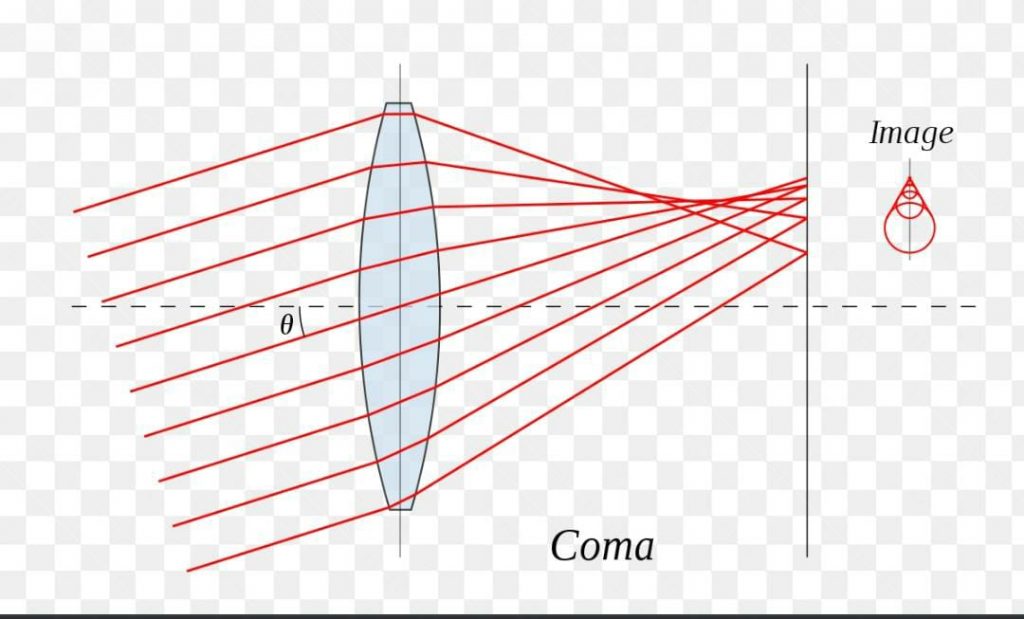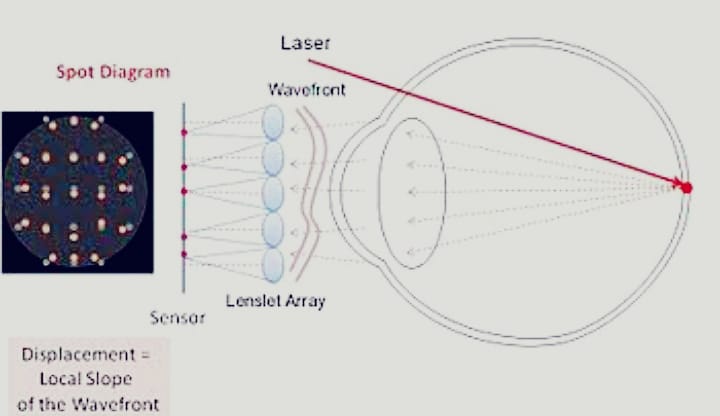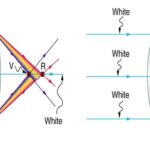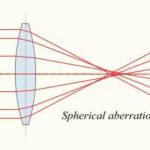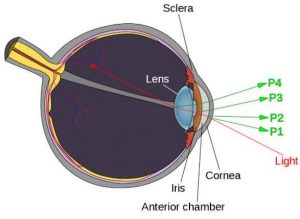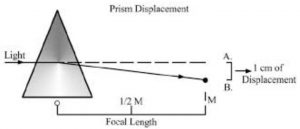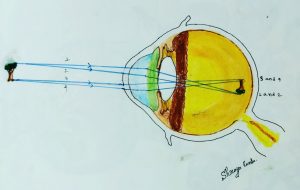Human eye consists of many optical parts and produce a optical system. It has a lower degree of imperfection, which is also called Aberration. Human eye takes over those defects very small degree that it consider negotiable. Mechanisms responsible for decreasing the aberrations in Human eye:
· Iris is cutting off the peripheral rays.
· The index difference between the crystalline lens cortex & nucleus. Index of lens nucleus is-
Cortex is-
· Less sensitivity of peripheral retina.
· The neuro sensory layer retina is more sensitive to the perpendicular rays.
This phenomenon is called Stiles-Crawford effect. Physiological optical defects which is also called Optical aberrations of the normal eye are described below
- Diffraction of light: The edge of an aperture of the rim of a lens is caused bending of light which is Diffraction. In this light brought to a focus does not come to a point, it gives rise to a blurred disc of light which is surrounded by several dark and light bands. This pattern is produced by lens. In this pattern the centre is a bright spot, which is also known as Airy disc because of sir George Airy who first noticed and reported it. In a study it shows that Diffraction blur increases in the people with small pupil. As a practical result of interaction of diffraction, spherical aberrations, retinal illumination, optimum visual acuity occurs over an intermediate range of pupil diameter which is 3-4mm.
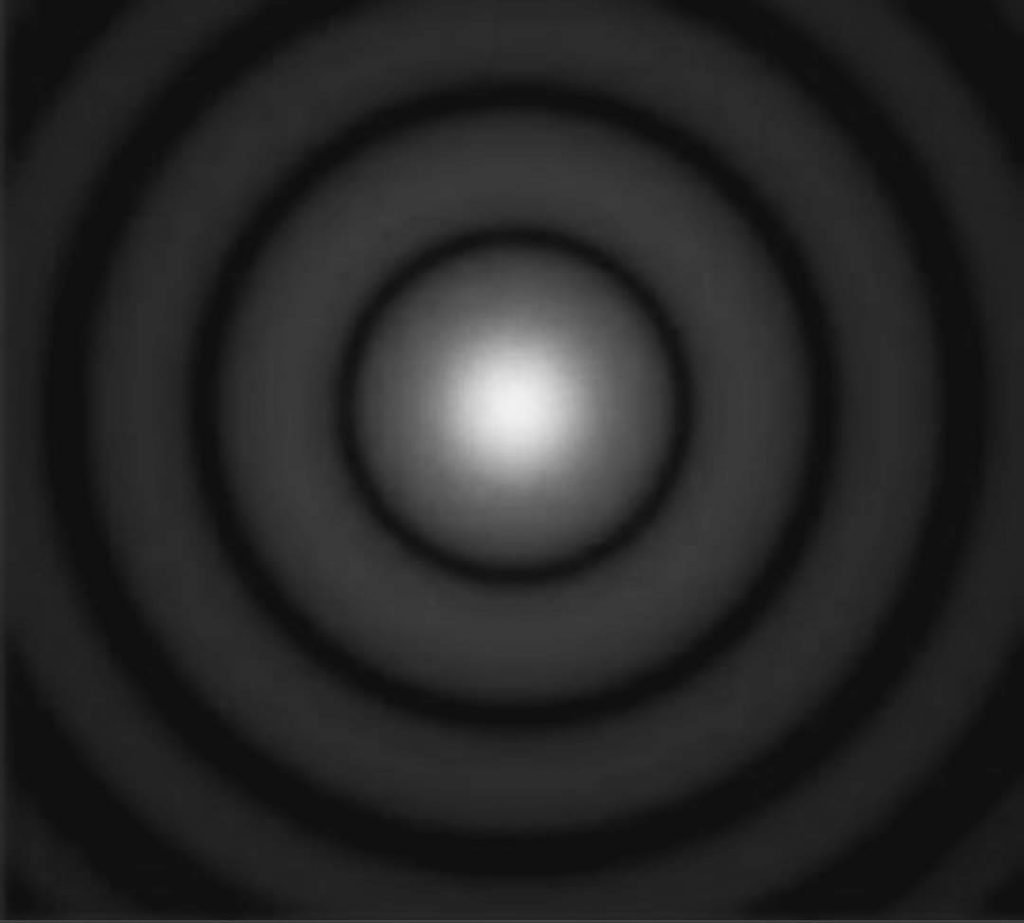
2. Spherical Aberration: Spherical aberration happens because peripheral rays refracts and bend strongly than paraxial rays in a spherical lens. For that in convex peripheral rays focused near to the lens. Human eye have a power of +60d. Long ago there was a thought that consisting that much power can lead to various amount of spherical aberration. But after doing aberroscopy to find out the amount of spherical aberration have revealed that the dominant aberration of human eye is not spherical aberration but it is coma like aberration. Factors responsible for diminishing the spherical aberrations from Human eye: · Bizarre curvature of the cornea. It flatter in periphery than centre. · Human crystalline lens have unique structure. In crystalline lens the density of nucleus is higher than peripheral side. The curvature of central portion is different from peripheral part of crystalline lens.
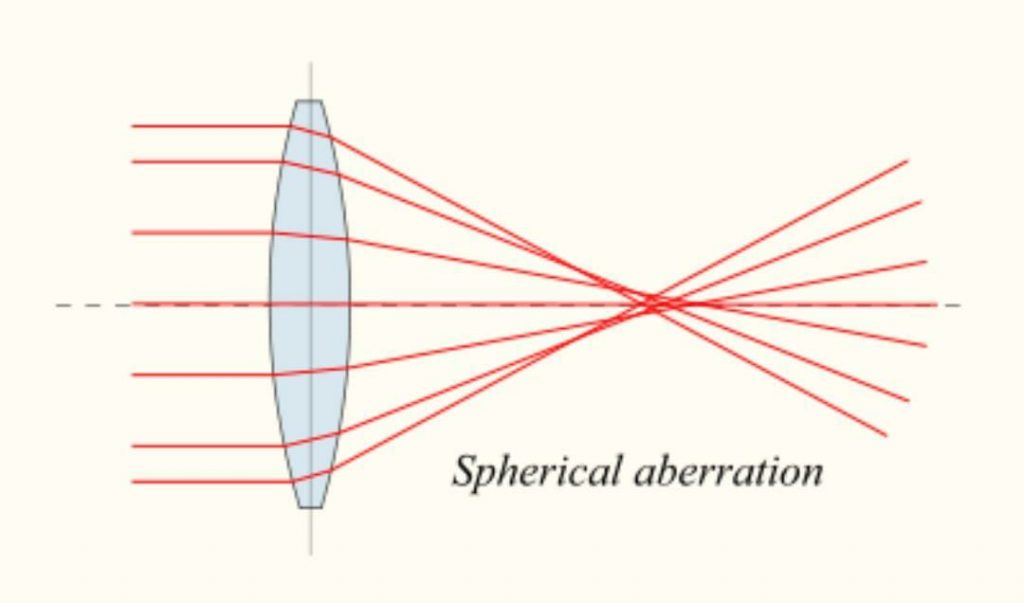
3. Chromatic Aberration: Chromatic aberration occurs due to index of refraction varies with the wave length of incident rays in any transparent medium. Human eyes acts as a convex system, in it Blue light is focused slightly in front of red. So, an emmetropic person sees both red and green light equally and myopic person sees green light slight better. With the help of this Duochrome test is conduct to refine the spherical power in subjective refraction. In reality chromatic aberration is minimized by the narrow spectral sensitivity bands of the long and mid wave length cones.
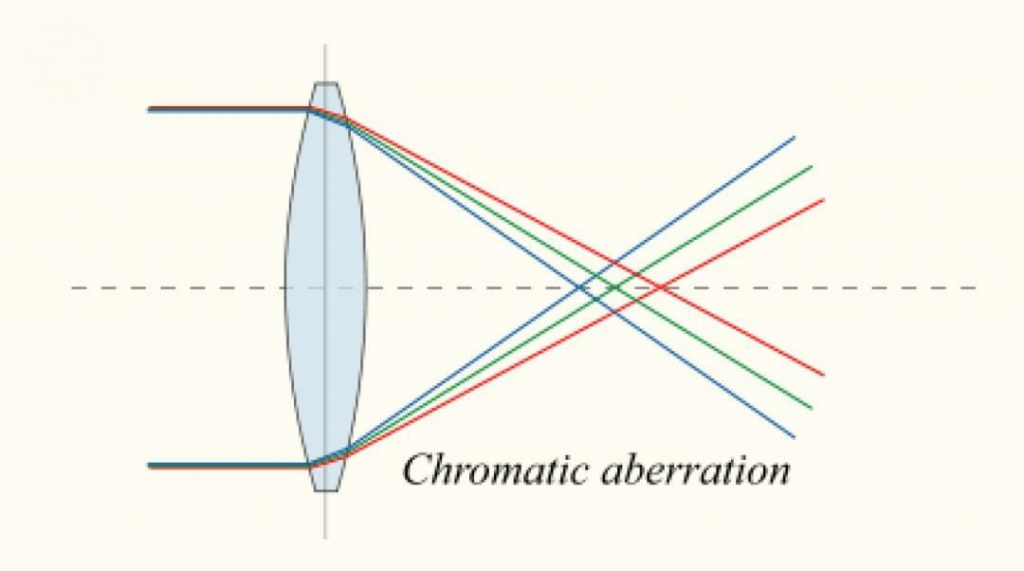
4. Decentration: As we all know eyes refractive portion cornea and crystalline lens alter the direction of the incident rays to focus them on the retina. For this , the concentration of these two should be on a common axis. But in reality these surface is not on a common axis. The crystalline lens is decentred and tipped with the respect of the cornea and with the visual axis of the eyes too. The reported study says that the centre of curvature of cornea lies about 0.25mm below the axis of the crystalline lens. Although the effects of deviation are usually small so that we can negotiate it.
5. Oblique Aberration: Oblique aberration occurs when rays of light comes through a spherical lens obliquely. That is why the peripheral portion of lens will form Strum’s Conoid. This type of aberration caused due to formation of two focus by the oblique light rays from an object. Pupil of human eye restricted the light rays which come obliquely because of this phenomenon it develops. When a person look at an angle through the lens. There is a deviation created and the person perceives a blur. This can be reduced by using Periscopic lens.
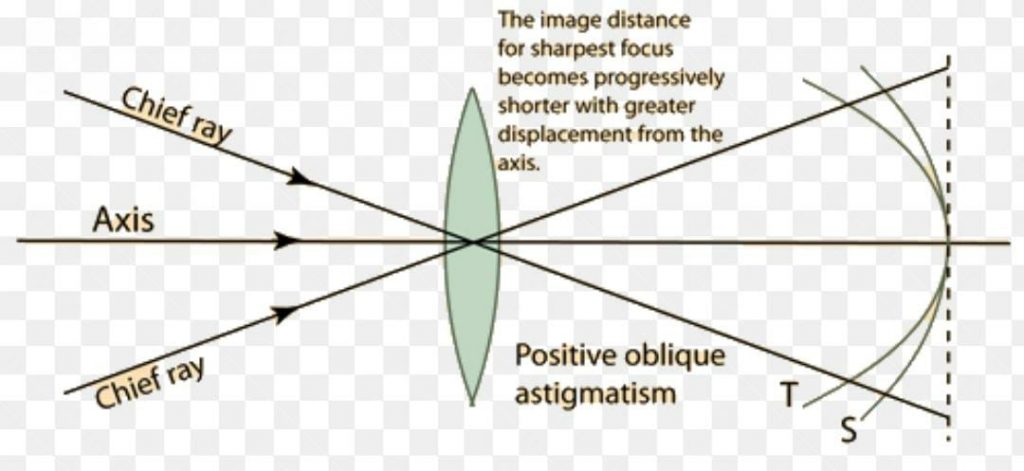
6. Coma: Coma is also known as ‘Comatic Aberration’. It develops when light rays pass from various parts of spherical surface of a lens. They vary in magnification creating series of asymmetrical circular shapes of increasing sizes. Together they form a cone like structure. The limitation of rays to the axial areas of the lens can reduce this effort.
